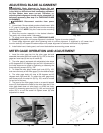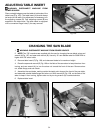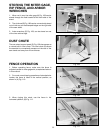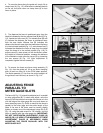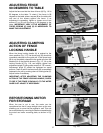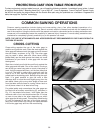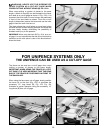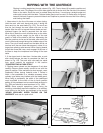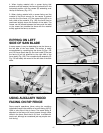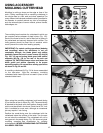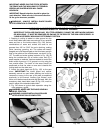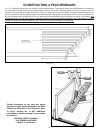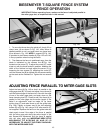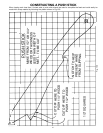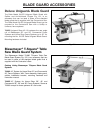
41
Fig. 128
Fig. 127
Fig. 129
Fig. 130
4. When ripping material with a veneer facing that
extends over the material, the fence (A) should be in the
horizontal position with the veneer (B) extending over
the lip of the fence, (Fig. 127).
5. When ripping material with a veneer facing and the
material is not thick enough for the veneer to extend
over the lip of the fence, or if the veneer facing (B) is on
both sides of the material, (Fig. 128), the fence can be
positioned slightly above the surface of the table. The
veneer can be placed between the fence and the table
or the veneer can straddle the fence with the material
solidly against the fence, as shown.
RIPPING ON LEFT
SIDE OF SAW BLADE
In some cases, it may be desirable to use the fence on
the left side of the saw blade. This action is easily
accomplished by repositioning the fence (A) Figs. 129
and 130, fence clamp bar (B), and lock knobs (C) so that
the fence (A) will be attached to the right side of the
fence body, (Fig. 130). The complete fence assembly (D)
Fig. 130 can easily be moved to the left side of the saw
table.
B
A
B
B
A
C
C
A
D
USING AUXILIARY WOOD
FACING ON RIP FENCE
Fig. 130A
Some special operations (when using the moulding
cutterhead) require the addition of a wood facing (A) Fig.
130A to one side of the rip fence. The wood facing is
attached to the fence with wood screws through holes
drilled in the fence. Stock that is 3/4 inch is suitable for
most work, although an occasional job may require one-
inch facing.
A



